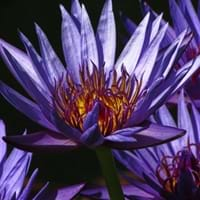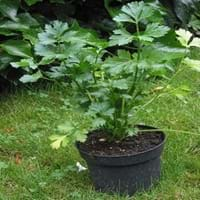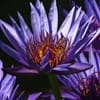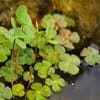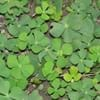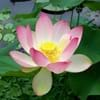Life Span
Perennial
Annual or Biennial
Origin
Eastern Africa
Europe, Northern Africa, Asia
Types
Not Available
Not Available
Habitat
Lowland, Ponds
Coastal Regions, Marshy ground, Wet ground
USDA Hardiness Zone
10-11
Not Available
AHS Heat Zone
Not Available
9-3
Sunset Zone
Not Available
Not Available
Habit
Oval or Rounded
Upright/Erect
Flower Color
Blue, Dark Blue, Yellow, Yellow green
White
Flower Color Modifier
Bicolor
Bicolor
Fruit Color
Light Green
Tan, Brown
Leaf Color in Spring
Dark Green, Green
Light Green
Leaf Color in Summer
Dark Green
Green, Light Green
Leaf Color in Fall
Green, Orange, Yellow
Green, Light Green
Leaf Color in Winter
Green
Not Available
Leaf Shape
Broadly Ovate
Irregular
Plant Season
Spring, Summer, Fall, Winter
Spring, Summer
Sunlight
Full Sun, Partial Sun
Full Sun
Type of Soil
Clay, Loam
Loam
The pH of Soil
Acidic, Neutral, Alkaline
Neutral, Alkaline
Soil Drainage
Average
Well drained
Bloom Time
Early Spring
Late Spring
Tolerances
Pollution, Drought, Soil Compaction
Drought
Where to Plant?
In Water, Pot
Container, Ground
How to Plant?
Corms or bulbs, From Rhizomes, Seedlings
Seedlings, Transplanting
Plant Maintenance
Medium
Low
Watering Requirements
Plant grows in water
Keep ground moist, Requires regular watering
In Summer
Lots of watering
Lots of watering
In Spring
Moderate
Moderate
In Winter
Average Water
Average Water
Soil pH
Acidic, Neutral, Alkaline
Neutral, Alkaline
Soil Type
Clay, Loam
Loam
Soil Drainage Capacity
Average
Well drained
Sun Exposure
Full Sun, Partial Sun
Full Sun
Pruning
Remove damaged leaves, Remove dead branches, Remove dead leaves
Remove damaged leaves, Remove shoots
Fertilizers
All-Purpose Liquid Fertilizer
Less fertilizing
Pests and Diseases
Lily Beetle, Red blotch, Sap-Sucking Insects
Bacteria, Downy mildew, Fungal Diseases, fungus, Mosaic viruses, Pink Root, Red blotch
Plant Tolerance
Drought
Frost
Flower Petal Number
Single
Single
Fragrant Bark/Stem
No
Yes
Foliage Texture
Not Available
Coarse
Foliage Sheen
Glossy
Glossy
Attracts
Aphids, White bugs
Insects, Mice, Rodents, Spider Mites
Allergy
Diabetes, Nausea
Irritation to stomach
Aesthetic Uses
Beautification, Hanging Basket, Showy Purposes
Not Used For Aesthetic Purpose
Beauty Benefits
Not Available
Good for skin, Improve skin condition, Moisturizing, Skin Problems
Environmental Uses
Air purification
Air purification, Food for animals, Food for birds, Food for insects
Medicinal Uses
Anxiety, Combats Stress, Diarrhea, Improve circulation, increase memory, Soothing and relieving pain
Cancer, Combats Stress, Eye Problems, High blood pressure, High cholestrol, Indigestion, Inflammation, Weight loss
Part of Plant Used
Leaves, Root, Stem
Leaves, Seeds
Other Uses
Oil is used in perfume, soaps, creams, etc., Traditional medicine, Used as Ornamental plant, Used for its medicinal properties
Employed in herbal medicine, Oil is used in perfume, soaps, creams, etc., Used As Food, Used for its medicinal properties, Used as a spice
Used As Indoor Plant
Yes
Yes
Used As Outdoor Plant
Yes
Yes
Garden Design
Bog Garden, Water Gardens
Container, Edible, Herb / Vegetable
Botanical Name
Nymphaea caerulea
APIUM graveolens
Common Name
Blue Lotus, Blue Egyptian lotus
Celery
In Hindi
ब्लू लोटस
अजवायन
In German
Blue Lotus
Sellerie
In French
Blue Lotus
Céleri
In Spanish
Blue Lotus
Apio
In Greek
Blue Lotus
Σέλινο
In Portuguese
Blue Lotus
Aipo
In Polish
Blue Lotus
Seler
In Latin
Blue Lotus
apium
Phylum
Magnoliophyta
Tracheophyta
Class
Magnoliopsida
Magnoliopsida
Order
Nymphaeales
Apiales
Family
Nymphaeaceae
Apiaceae
Clade
Angiosperms
Angiosperms, Asterids, Eudicots
Tribe
Not Available
Apieae
Subfamily
Not Available
Apioideae
Number of Species
Not Available
Not Available
Season and Care of Blue Lotus and Celery
Season and care of Blue Lotus and Celery is important to know. While considering everything about Blue Lotus and Celery Care, growing season is an essential factor. Blue Lotus season is Spring, Summer, Fall and Winter and Celery season is Spring, Summer, Fall and Winter. The type of soil for Blue Lotus is Clay, Loam and for Celery is Loam while the PH of soil for Blue Lotus is Acidic, Neutral, Alkaline and for Celery is Neutral, Alkaline.
Blue Lotus and Celery Physical Information
Blue Lotus and Celery physical information is very important for comparison. Blue Lotus height is 80.00 cm and width 40.00 cm whereas Celery height is 45.70 cm and width 30.50 cm. The color specification of Blue Lotus and Celery are as follows:
Blue Lotus flower color: Blue, Dark Blue, Yellow and Yellow green
Blue Lotus leaf color: Dark Green and Green
Celery flower color: White
- Celery leaf color: Light Green
Care of Blue Lotus and Celery
Care of Blue Lotus and Celery include pruning, fertilizers, watering etc. Blue Lotus pruning is done Remove damaged leaves, Remove dead branches and Remove dead leaves and Celery pruning is done Remove damaged leaves and Remove shoots. In summer Blue Lotus needs Lots of watering and in winter, it needs Average Water. Whereas, in summer Celery needs Lots of watering and in winter, it needs Average Water.
